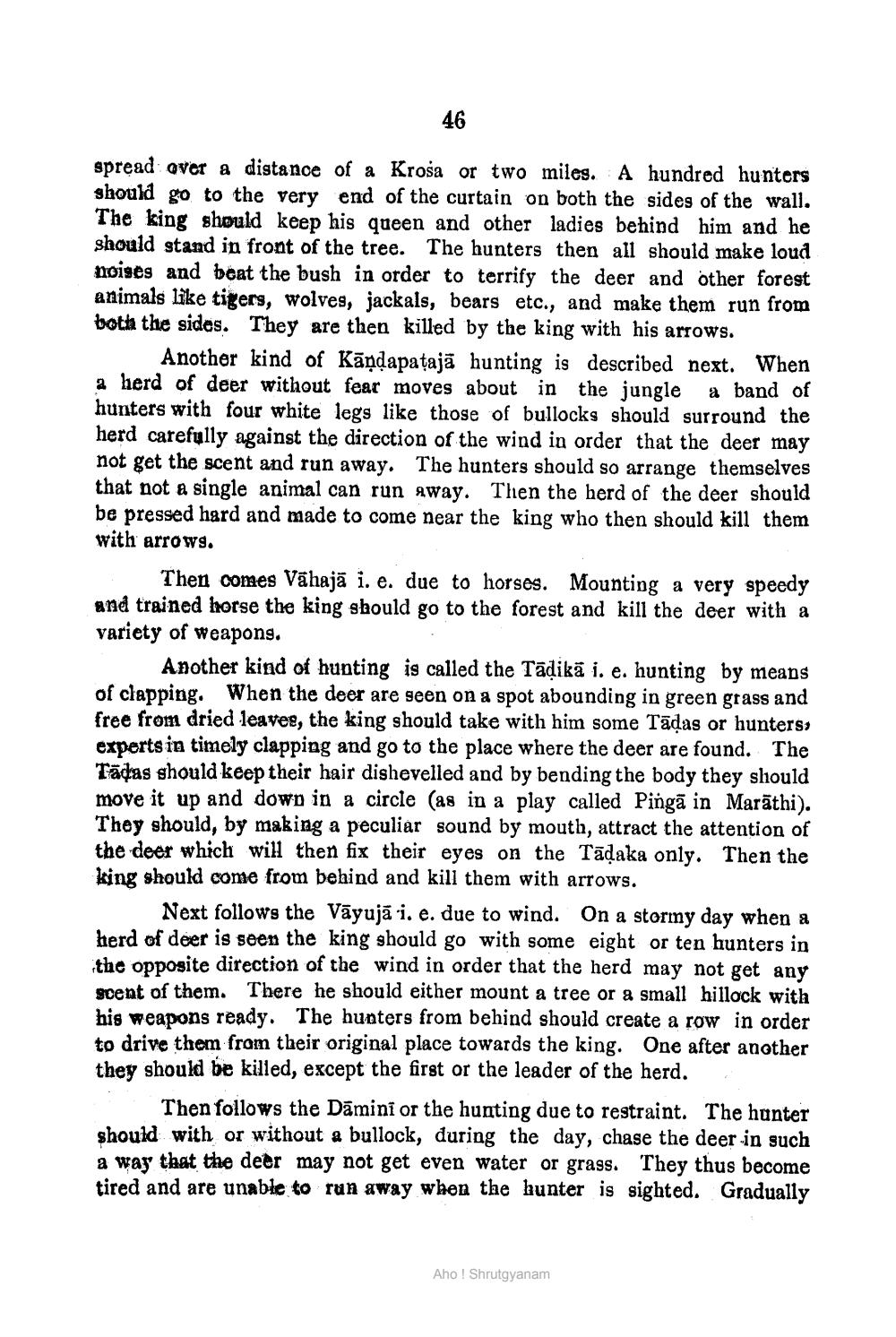________________
46
spread over a distance of a Krosa or two miles. A hundred hunters should go to the very end of the curtain on both the sides of the wall. The king should keep his queen and other ladies behind him and he should stand in front of the tree. The hunters then all should make loud noises and beat the bush in order to terrify the deer and other forest animals like tigers, wolves, jackals, bears etc., and make them run from botta the sides. They are then killed by the king with his arrows.
Another kind of Kāņdapaļajā hunting is described next. When a herd of deer without fear moves about in the jungle a band of hunters with four white legs like those of bullocks should surround the herd carefully against the direction of the wind in order that the deer may not get the scent and run away. The hunters should so arrange themselves that not a single animal can run away. Then the herd of the deer should be pressed hard and made to come near the king who then should kill them with arrows.
Then comes Vāhajā i. e. due to horses. Mounting a very speedy and trained horse the king should go to the forest and kill the deer variety of weapons.
Another kind of hunting is called the Tādikā i. e. hunting by means of clapping. When the deer are seen on a spot abounding in green gra free from dried leaves, the king should take with him some Tādas or hunters experts in timely clapping and go to the place where the deer are found. The Tādas should keep their hair dishevelled and by bending the body they should move it up and down in a circle (as in a play called Pingā in Marāthi). They should, by making a peculiar sound by mouth, attract the attention of the deer which will then fix their eyes on the Tādaka only. Then the king should come from behind and kill them with arrows.
Next follows the Vāyujā i. e. due to wind. On a stormy day when a herd of deer is seen the king should go with some eight or ten hunters in the opposite direction of the wind in order that the herd may not get any scent of them. There he should either mount a tree or a small hillock with his weapons ready. The hunters from behind should create a row in order to drive them from their original place towards the king. One after another they should be killed, except the first or the leader of the herd.
Then follows the Dāmini or the hunting due to restraint. The hunter should with or without a bullock, during the day, chase the deer in such a way that the deer may not get even water or grass. They thus become tired and are unable to run away when the hunter is sighted. Gradually
Aho ! Shrutgyanam




